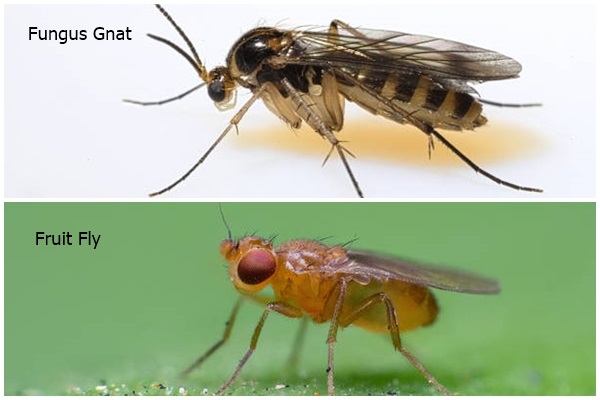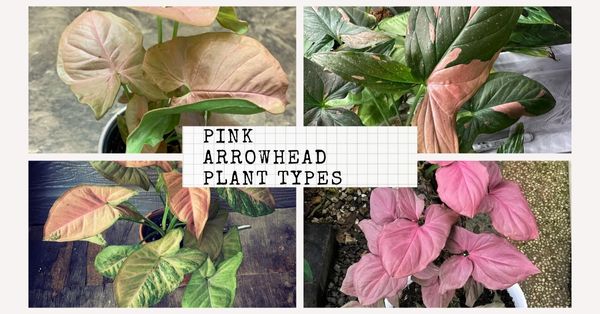How to Get Rid of Fungus Gnats in Houseplants
No need to worry about the pesky fungus gnats when you know how to eradicate them. Learn all about the ways to control and get rid of fungus gnats.

Fungus gnats infestation can have a drastic impact on the well-being of the houseplants. They are small flies whose larvae thrive in sources of organic decomposition of soil, potting mix, and other container media. Their larvae also munch on the roots causing yellowing leaves, wilting, and ultimately the death of the plant. The adult fungus gnats do not cause any harm but are a nuisance to have around houseplants, especially indoors. We have come up with the tried and tested ways to effectively get rid of these fungus gnats in houseplants. But before that, let’s learn how to prevent fungus gnats from infesting houseplants in the first place!
How to Prevent Fungus Gnats
As said by someone, wise prevention is better than cure! By following these few simple practices, you can reduce the likelihood of fungus gnat infestation.
1. Reduce Watering

Fungus gnats thrive in overwatered soil as the conditions are ideal for breeding. Allowing the top one to two inches of soil to dry out before watering goes a long way to prevent the breeding of fungus gnats. Form a habit of not watering the plant more than necessary, and it’ll prevent fungus gnats and root rot as well.
2. Bottom Watering Plants

The idea is to let the plant soak water from the drainage holes at the bottom instead of the conventional watering method from the top. It’s a great way to ensure that you don’t overwater and keep the soil moist at the same time. Bottom watering can be tricky for large houseplants, but it’ll not be much difficult for medium to small houseplants.
3. Cover Drainage Holes

Fungus gnats lay eggs from above, but they can also find a way from beneath through the drainage holes. You can add a thin second layer of sand at the bottom when planting to close the way for gnats to enter. Another way to block off the entrance is by placing a filter of some sort at the bottom of the pot during potting or repotting.
4. Replace Potting Soil

Repotting is an ideal way to get rid of the old soil and, with it, the larvae of fungus gnats. Springs and summers are the ideal time for repotting as the houseplant won’t go into shock. Also, make sure that the new potting mix is of good quality and free from any contamination.
5. Aerate the Soil

As worms are not there to keep the houseplant mix aerated, manually aerating the mix becomes essential. Water does not accumulate at the top when the soil is aerated, thus not providing a breeding ground for fungus gnats. Even distribution of moisture, breaking of dry pockets of soil, and preventing caking are some added benefits of aerating. Use chopsticks, fork, or any other thin and long object to work around the soil!
How to Get Rid of Fungus Gnats in Houseplants
Fungus gnats can lay 200-300 eggs at a time, which means the infestation can quickly get out of hand. If the soil is infested with fungus gnats or adult gnats are swarming the place, there are some effective ways to get rid of them. Here is how you can get rid of fungus gnats!
1. Fungus Gnats Sticky Trap

The easiest way to catch the adult fungus gnats is by placing the yellow sticky traps near the houseplant. Instead of using large cards, use small ones or cut the large card into small square pieces. Once the gnat trap gets covered with fungus gnats, discard it in the dumpster.
2. Sticky Fly Ribbons

Sticky fly ribbons work the same way as fungus traps, but it’s just in the shape of ribbons. You can hang these sticky ribbons on the houseplant or nearby the plant. These sticky ribbons will not just only fungus gnats but mosquitoes and houseflies as well.
3. Use Apple Cider Vinegar

Apple cider vinegar attracts the fungus gnats, and this property makes it an ideal choice for fly trapping solutions. To make the solution, mix equal quantities of vinegar and water in a bowl and add a few drops of dishwasher soap to the solution. The fungus gnats will fall in the mix but won’t escape because of the soap solution. Continue to replace the solution till you get rid of the gnats.
4. Bti Drench

When applied as a drench, bacillus thuringiensis israelensis (Bti) controls fungal gnats when it’s in the larvae stages. It does that by coating the roots that larvae feed, causing their untimely death due to the toxins. Bti is a toxin only for the fungus gnats larvae and is otherwise harmless. Check out this research article by the Colorado State University extension!
5. Sand or Gravel Top Dressing

Fungus gnats larvae usually infest and breed in the top couple of inches of potting medium. Due to the dryness, fungus won’t be present in the rich wet medium, providing no food source to fungus gnats. Adding a one-inch thick layer of sand or gravel over the top will prevent the gnats from laying eggs. You can also form a layer of decorative and colorful aquamarine stones.
6. Apply Hydrogen Peroxide Solution

Hydrogen peroxide kills larvae the instant it comes in contact with it, so you can effectively use it to get rid of fungus gnats. Make sure to dilute one part hydrogen peroxide (3 percent) to four parts water before applying. Hydrogen peroxide sizzles for a few minutes then break into hydrogen and oxygen molecules.
7. Potato Slice Trap

Cut the potatoes into thin slices and place them on the potting medium of the infested houseplants. The slices attract the gnat larvae and stick to the bottom of the potato slices. Discard these slices with the larvae every 4-6 hours and replace them with fresh ones. Combine this measure with some others, and soon the population of fungus gnats will dwindle. It’s also a good way to detect the presence of fungus gnats.
8. Buy Fly Catcher

There are many flycatchers available in the market that attract flying insects, including fungus gnats. They are usually battery-powered and will lure adult fungus gnats with LED lights and eventually kill them. Even the basic ones do the job just fine, so there isn’t any need to invest too much.





